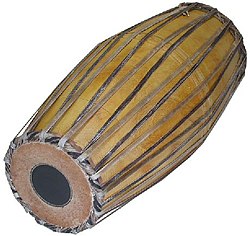A research by scientists and percussionists to standardise materials, methods of making mridangam.
The scientific quest for perfect mridangam was spurred by veteran mridangam exponent Umayalpuram K. Sivaraman, who sought to know whether it was possible to engineer a travel-friendly mridangam instrument that can be dismantled and reassembled later that would maintain the perfect "sruthi" in any hall ambience.
Delivering the Prof. Y.Nayudamma Memorial Lecture on 'Science in Music' at the Central Leather Research Institute (CLRI) recently, T. Ramasami, Secretary, Department of Science and technology (DST), said the collaborative project that fused art and science sought to explain the correlation between the chemistry of components used to make the mridangam and the musical outcome.
According to Dr. Ramasami, the mridangam project draws a parallel with scientific investigations in the West to unravel the mystique shrouding Violin. The similarities between the mridangam and the violin that had been accepted into the Carnatic ensemble included the complex composition of materials and closely guarded familial know-how involved. He pointed out that even after decades of research... scientists were unable to explain the correlation between composition of materials and methods of making violin and mridangam with the musical outcome.
Most of the artisans involved in making the instrument aim only at making money, severely affecting the quality of the instrument that is produced which has an adverse impact on the musical outcome. No doubt, there may be one artisan who would do his job fine, but one has to search for them like a task of finding a needle in sea. This is my opinion out of my (Sanatorium Sriram Venkataraman) own experience as a mridangist.
So, the quest for scientific methods of making the instrument is all the need of the hour as rightly initiated by mridangist Umayalpuram K. Sivaraman. There is so much Chemistry Physics and Mathematics awaiting the investigation of scientists. For example, the mridangam project involves investigating the musical impact of the materials such as Goatskin parchments, minerals such as Oxides of Manganese, Magnesium and Titanium and an array of adhesives.
Dr. Ramasami called for restoring the soul and passion in science that was increasingly getting straitjacketed as a "system-driven pursuit". A fusion of art and science could bring back the passion for original research. He said, "apart from bringing together artists and scientists, the mridangam project was important in ensuring the presence of the mridangam for posterity, as families of artisans engaged in making the instruments were a vanishing clan".

